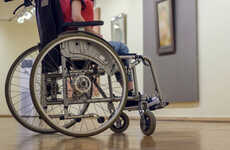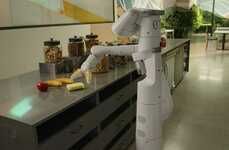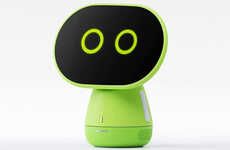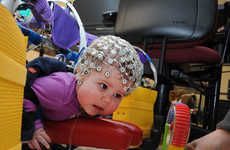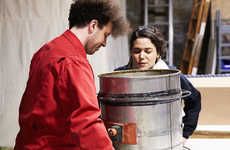This Machine Can Lessen Infants' Risk of Cerebral Palsy
References: spectrum.ieee.org & digitaltrends
Researchers from the University of Oklahoma's Health Science Center have developed a machine, called the 'Self-Initiated Prone Progression Crawler' (SIPPC), that combines a toy skateboard, a mind-reading robot and an AI algorithm to help lessen the effects of cerebral palsy for at-risk infants. Though cerebral palsy usually isn't diagnosed in children until at least their first birthday, experts agree that children with the risk of developing the disorder should receive therapy as early as possible.
The SIPPC machine is essentially a crawling aid, which is why it helps limit the effects of cerebral palsy. Typically, the disorder makes crawling so difficult that infants simply stop trying, ultimately preventing the brain from developing important locomotion and motor skills. The SIPPC uses electrodes that read an infant's brain signals and interpret where the child wants to go, then provides some aid to help the child get there. This lets the brain continue to develop important regions, ultimately reducing the impact of cerebral palsy later in life.
The SIPPC machine is essentially a crawling aid, which is why it helps limit the effects of cerebral palsy. Typically, the disorder makes crawling so difficult that infants simply stop trying, ultimately preventing the brain from developing important locomotion and motor skills. The SIPPC uses electrodes that read an infant's brain signals and interpret where the child wants to go, then provides some aid to help the child get there. This lets the brain continue to develop important regions, ultimately reducing the impact of cerebral palsy later in life.
Trend Themes
1. Robotic Assistive Devices - Developing robotic devices that assist individuals with disabilities, such as the Palsy-Preventing Robotic Onesies, can disrupt traditional therapy methods and improve outcomes.
2. Mind-reading Technology - Advancements in mind-reading technology, like the one used in the SIPPC machine, have the potential to revolutionize healthcare by enhancing treatment options and providing personalized care.
3. Early Intervention Therapy - The idea of providing early intervention therapy to infants at risk of cerebral palsy can lead to breakthroughs in reducing the long-term effects of the condition and improving overall quality of life.
Industry Implications
1. Healthcare - The healthcare industry can explore the use of robotic assistive devices and mind-reading technology to improve treatment outcomes for individuals with various disabilities, including cerebral palsy.
2. Technology - The advancement of mind-reading technology and the development of innovative robotic devices present disruptive opportunities within the technology industry for creating assistive technologies.
3. Pediatric Rehabilitation - Incorporating early intervention therapy techniques and utilizing robotic assistive devices can transform pediatric rehabilitation practices, offering new ways to address conditions like cerebral palsy.
4.2
Score
Popularity
Activity
Freshness
